"St. St. Cyril and Methodius" Church
A true paragon of the church architecture of the II Bulgarian kingdom - "St. St. Cyril and Methodius" rises in the very heart of Sofia.
On a strategic crossroad.
Many factors determine the choice of Sofia as Bulgaria’s capital. This choice was made in 1879 after the Liberation from the Ottoman Rule under the proposal of Georgi Rakovski and Prof. Marin Drinov. They weren’t alone, however – the proposal was supported by many more public figures. Sofia was bearing the old glory of Serdika and Sredets. The Thracians from the Serdi tribe appreciated the favourable location of the former Neolithic settlement as well as the availability of suitable resources, so they settled here to found a city called Serdonpolis or Serdica. It developed and continued to progress in the time when the Roman Empire blossomed. Thanks to excavations carried out in different parts of the city, remains of main and lesser streets have been found, with several authentic streets visible even today. Part of a street can be seen in the court of the Presidency while between it and the Council of Ministers there’s the authentic 6th-century surface of the main street – one of the liveliest streets in Serdica.
The city that today is known as Sofia survived many invasions during the time of the so called “Great Migration”. However, from 6th century on the city was renovated and became an important administrative and economic centre of the Byzantine Empire. In that period it was called Triaditsa. Upon entering the borders of Bulgaria in 809 it got the Slavic name Sredets. It’s been bearing its last name – Sofia – since 15th century. It received it after it was chosen to be Bulgaria’s capital over Plovdiv and Tarnovo (Veliko Tarnovo).
Sofia’s location is one of the reasons why it was selected to be a capital city – it is in the middle of the Balkan Peninsula, at comparatively short distance from the capitals of the neighbouring countries, on a strategic crossroad that connects the Danube bank with the Aegean Sea coast and with the availability of mineral springs with healing properties.
Numerous historical events have left their imprints on the capital during the centuries. Today we’re lucky to have evidence of times that are long gone. Among the oldest architectural sights are the St. George Rotunda, the St. Petka of the Saddlers Church, the St. Sophia Church and others. The most imposing temple in the Balkan Peninsula is also here – the St. Aleksander Nevsky Temple-Monument. The unique St. Nikola Church of Boyana is located at the foot of Vitosha Mountain – it is a cultural monument of global importance under the protection of UNESCO.
The outskirts of Sofia are home to multiple small monasteries known as Mala Sveta Gora. This network of monasteries was first started during Bulgaria’s Middle Age. The monasteries were centrally governed and comprised a single spiritual community. They are located at the foot of the Vitosha, Lyulin, Plana, Lozenska and Ruy mountains but also as far as the southern slopes of the Balkan Mountains up to the Dragoman Heights in the Sofia and Ihtiman’s plains. It is supposed that this monastic community was set up as far back in time as during the First Bulgarian Kingdom. Specialists haven’t agreed on the number of temples that comprises the so called Mala Sveta Gora. Some of them include only 14 monasteries: Dragalevtsi Monastery of the Holy Mother of God of Vitosha, St. John of Rila in German, thought to be the oldest, dating from 10th century, St. George in Kremikovtsi, the Eleshnishki Monastery of the Holy Mother of God, the Kurilski Monastery of St. John of Rila, the Lozenski Monastery of St. Spas, the Osenovlashki Monastery of the Seven Altars, the Divotinski Monastery of Holy Trinity, the Ilienski Monastery of St. Elijah, the Kladnishki Monastery of St. Nikola, the Kokalyanski Monastery of St. Archangel Michael, the Seslavski Monastery of St. Nikolay Mirlikiyski and the Iskretski Monastery of the Holy Mother of God. Others add the Gornobanski Monastery of St. St. Cyril and Methodius, the Podgumerski Monastery of St. Dimitar, the Zheleznishki Monastery of the Holy Spirit, the Boyanski Monastery of St. Pantaleymon, the Bistrishki Monasteries of St. Petka and St. Peter, the Vladayski Monastery of St. Petka, the Urvishki Monastery of St. Nikola Letni, the Lozenski Monastery of St. Apostles Peter and Paul and the Alinsky Monastery of St. Spas, making them 25 in total. Still others go even further, adding under the term all monasteries located on the territory of Sofia City and the Pernik Region. The monasteries were built in a similar fashion as the ones in the Athos Peninsula in Greece and had the same monastic code and organizational structure. Today the Sofia Region is home to 66 Orthodox monasteries, 44 of which are working.

A true paragon of the church architecture of the II Bulgarian kingdom - "St. St. Cyril and Methodius" rises in the very heart of Sofia.
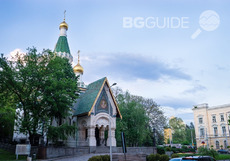
The Russian Orthodox Church "St. Nikolay" is one of the most remarkable architectural structures in Sofia.
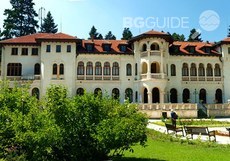
Vrana Palace and its beautiful park are a marvelous combination of history and nature.
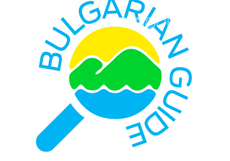
Църквата „Св. София“ е изключителна архитектурна ценност от ранните години на християнството.

Софийският римски амфитеатър е безценно, макар и случайно откритие.
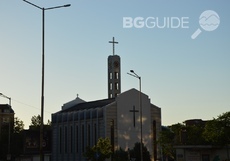
St. Josef Catholic Cathedral is one of the four major temples of different religions in the centre of Sofia City – a symbol of the religious tolerance of the Bulgarian people.
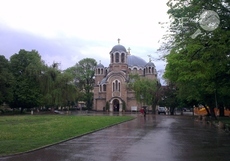
Right in the centre of today’s Sofia, in the little park between the streets of Tsar Ivan Shishman, Graf Ignatiev, 6-ti Septemvri and Gen. Parensov stands the beautiful building of the Sveti Sedmochislenitsi temple.

Парк-комплекс „Камбаните“ е символ на мечтата за световен мир.

На ключова транспортна връзка в София, водеща до Софийския университет и Националния дворец на културата, на ъгъла между булевард „Патриарх Евтимий“, бул. „Васил Левски“ и трамвайната и търговска улица „Граф Игнатиев“, площадът ежедневно привлича тълпи от хора, бързащи за среща с приятел.

Паметникът на Незнайния войн се намира в Центъра на София, на гърба на базиликата „Света София“.